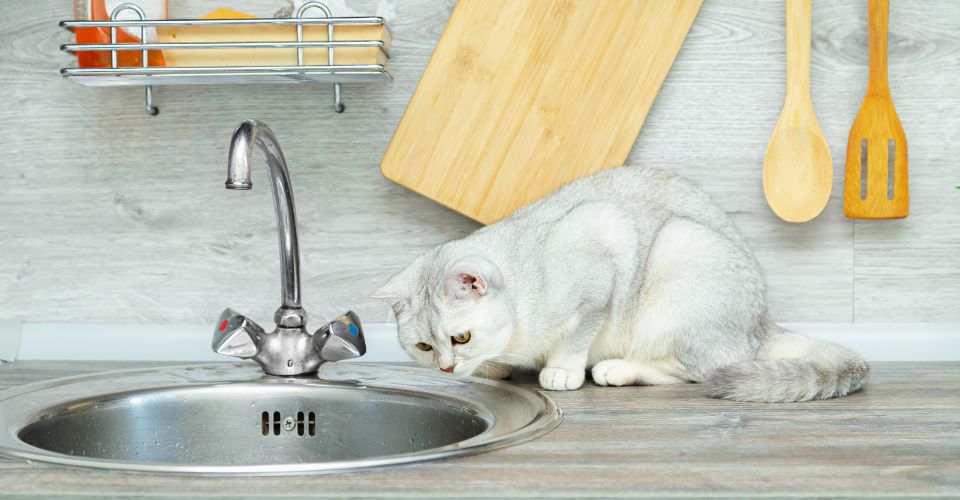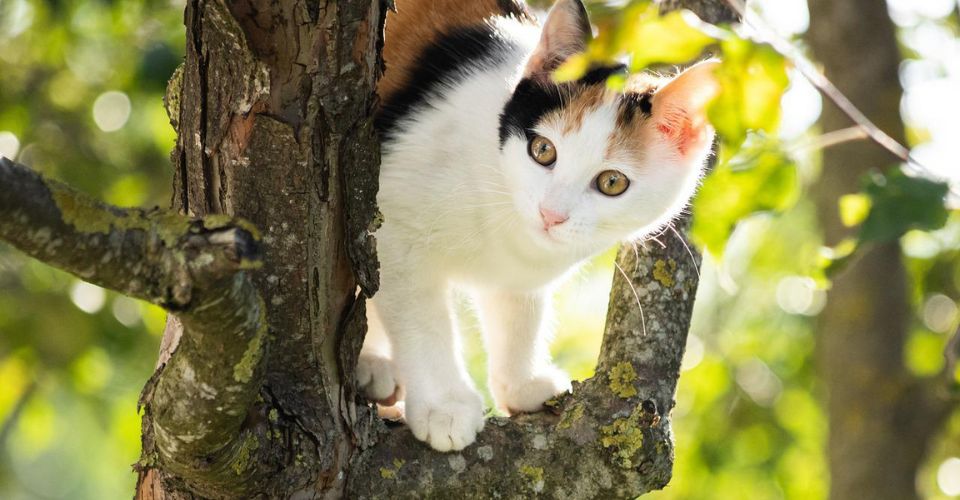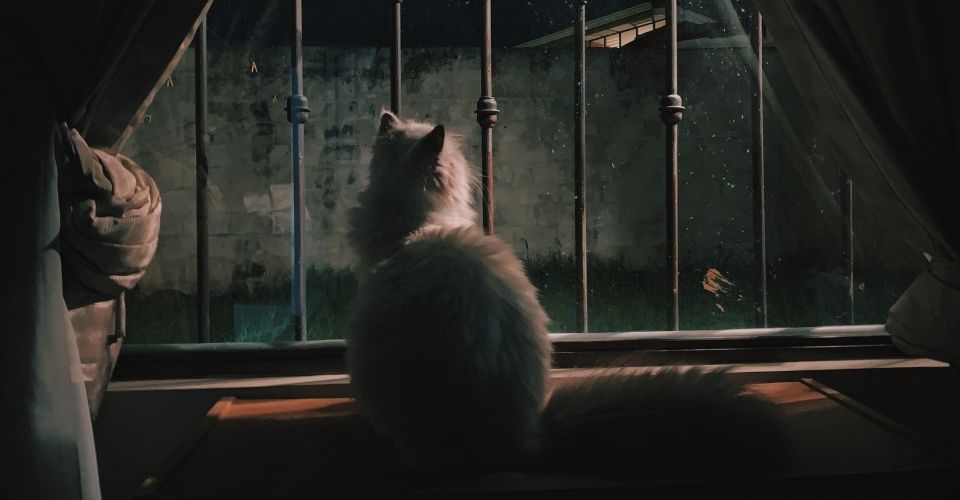Cats are the neat freaks of the animal kingdom and do not like to leave their business lying around. As pet parents, you just need to tap into their natural inclinations by simply rerouting them to the cat litter box so lovingly installed for them.
Cat potty training in itself is not very cumbersome, considering that you are dealing with intelligent creatures that are both quick learners and like to keep clean.
You need two things: early training and consistency to get there.
How to Pursue Cat Potty Training?
Cat potty training is easy to follow, provided you have the right tools and are persistent with it. It begins with choosing the right kind of litter box and litter material. Primarily, there are two types of litter: clumping and non-clumping. Since the choices vary for each individual, you will have to experiment a little to find the ones that suit your pet.
Next, you install the boxes and help the kitty familiarize itself with the litter box. Place them inside the litter box when they are most likely to relieve/ seem willing to do so. This could be done right after meals, waking up, and playtime.
If they fail to bury the feces, show them by throwing some litter material over it. Reward the behavior first with treats and encouragement, then switch to praise alone. Ensure to replace the litter and keep the box clean routinely.
Steps to Cat Potty Training
Cats naturally seek a sandy surface to relieve themselves and then proceed to bury it. Told you, neat freaks. So, you need to align what they seek with the litter box and everything else involved to make a smooth transition.
Dive in to find out how exactly to do it.
1. Start Early
Establishing the ground rules at the earliest is the key to having a peaceful and joyous experience for both humans and their pets. If you are trying to potty-train a new litter of cats, do not worry about the first few weeks. Get down to business once they are four weeks old and follow up daily to develop the habit.
If it is an older cat, start as soon as it arrives.
2. Choosing the Right Litter Box
Just as humans ask for a certain degree of privacy and need to feel safe and comfortable enough to relieve themselves, cats also need all these elements. Confused?
We are talking about the litter box. Many pet parents would be tempted to believe that cats need the covered varieties because they obviously know what’s better for them.

However, pet behaviorists point out that their wild ancestry dictates they refuse an enclosed spot where they could easily be ambushed. They are not getting attacked inside their own homes, but that is how they are programmed to think. But then you encounter the ones that do indeed prefer the covered ones.
Here is how to choose the right litter box:
- Choose a size-appropriate litter box for your cat. Something 1.5 times its length would do the job.
- Use smaller boxes for kittens and scale up as they grow. Introducing a tiny cat/kitten into a litter box too large for its size could be intimidating for the cat.
- Offer the option for both covered and uncovered litter boxes to see what your cat likes better.
- Always provide one box more than the total number of cats.
- Carefully choose where you install the litter box. You want to provide the kitty with enough privacy and lighting without making it feel claustrophobic.
Litter boxes come in all shapes and sizes—some are covered, some automatic; some allow entry from the top, and some from a corner.
You can find the right litter box here.
3. Choosing the Litter
Litter is the soft granular material you use as a base in the litter box. Typically classified into clumped and non-clumped varieties, you want it to feel soft for the kitty and do the job simultaneously. Both types of litter have their respective pros and cons. The non-clumping one is inexpensive but may need to be replaced more frequently, depending on how much of it is soiled.

| Type of Litter | Pros | Cons |
| Non-Clumping | Cheaper | Needs more frequent replacement |
| Clumping | Easier to scoop out | Pricey |
As the name suggests, the clumping variety clumps around the waste, saving much of the litter. It is easier to scoop out and needs a less frequent thorough cleaning. This stage of cat potty training will also need some hit and trial to perfect.
This is how to go about it:
- Offer your cat the option of clumping and non-clumping litters and see what it feels most comfortable relieving on.
- Suggestions for the litter depth range from 2 – 4 inches; start with 2 inches and gradually increase to see how they like it.
- Settle for the material, type, and depth of the litter used after experimentation with the varieties, choosing the one that is affordable and preferred by the cat.
4. Teaching the Cat to Use the Litter Box
Finally, it is time to introduce the cat to the routine you have been building up the momentum for. At this point, the cat has not yet interacted with the facilities you intend to provide.
First thing, install the litter box in a spot easily accessible, sufficiently lit, and slightly private. Remember, the box arrives before the cat does.
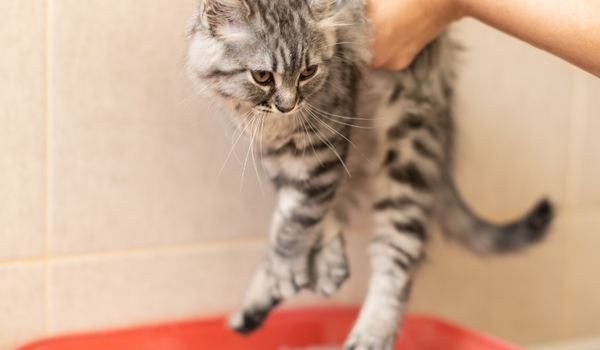
- Introduce the Litter Box: As soon as the kitty arrives in its new home, bring it face to face with all the litter boxes one by one. Let it sniff and touch its new restroom.
- Put Them Inside the Litter Box: Place them inside the box in the same go. If they fail to paw the litter at first, show them by doing so with your fingers.
- Bring Them to The Litter Box When in Need: Cats are most likely to relieve themselves after they wake up, post a lovely meal, or after they have drained their last bits of energy playing. Instinctively, they will go when they land with a full bladder on a material their genetic programming tells them should be used to pee.
- Clean Up Immediately: In the training phase, go through the hassle of cleaning up after each of these assisted visits to the litter box. You want to make the environment inviting for future use.
- Reward: This is the key to building any great habit; reward the desired behavior for reinforcing it. Initially, offer a treat and shower them with praise every time they use the litter box to relieve themselves. Slowly, you want to move away from treats and rely solely on the appreciation.
- Keep Up The Routine: Routines help to develop new habits. When you keep repeating the process every day, in the same sequence, there will come a time when the cat will not need your help anymore.
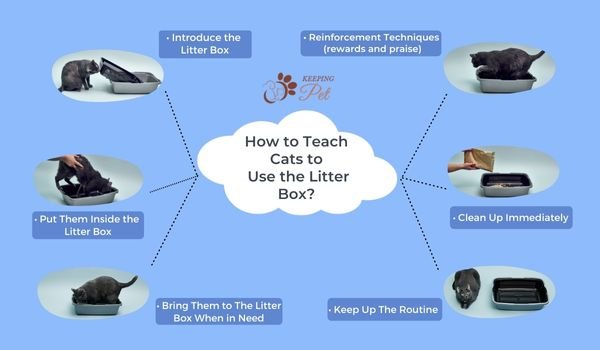
5. Keeping the Cat Litter Box Clean
As briefly touched upon earlier, cleaning the litter box is especially crucial during the training phase. In this period, make a habit of picking up the soiled litter after each use. Remember to refill after each cleaning commensurate with the litter removed.

The cats need the litter not just to go but also to bury the feces afterward. So, you need to maintain a 2 – 4 inches thick layer of litter at all times. Once the cat has successfully learned to use the litter box, you can start cleaning it on a daily basis.
Besides refilling the litter as required, emptying the box and thoroughly washing it with mild soap or vinegar and water solution is also advised. Commercially available disinfectants could be too harsh for your pet.
6. Keep Your Cool When It Soils Your Home
Remember that your temperament is of utmost importance in establishing house rules and developing good habits. Accidents are bound to happen, even more so while the habit has not fully developed yet.
Refrain from showing aggressive behavior or resorting to yelling when they do relieve themselves where they are not supposed to do so. Just keep your cool and proceed to clean the surface. Treating it with an enzymatic cleaner and/or masking the odor with another scent could effectively eliminate the cat pee smell.
Possible Troubles in Cat Potty Training and Ways to Fix Them
Despite the sweetest of dispositions and the best of your efforts, things can go south sometimes. Below we share some of the common troubles you may encounter when attempting cat potty training. Also shared are some of our suggestions to help you navigate those troubles.
Cat Does Not Use the Litter Box
So, you have been religiously following your cat’s potty training routine, but it does not seem to be using the litter box. There could be many reasons behind this, which we shall discuss one by one.
a. Inappropriate Litter Box
The importance of a litter box that the cat prefers for use cannot be stressed enough. It may be that your little friend is not comfortable with the litter box. A box too large, too small, and one that is exposed to the public or hidden away can be very uninviting for the cat to use.
b. Inappropriate Litter Material
Now, it is the litter that the feline comes in direct contact with when relieving itself. If the material is not to her liking, chances are low that she might use it. Instead, a soft rug or a sofa seat might seem like better options.
c. Stress
Just as stressful situations affect our ability to follow a routine, perform a job or even have medical implications, cats too are affected by it.
Rescued cats who have had traumatic experiences, changes in the environment, the addition of a new family member, switching home, or having strangers over can all be very stressful for cats.
d. Urinary Tract Infection/Other Illness
Urinary tract infection, pest infestation, or other medical conditions may make it difficult for the cat to go all the way to the litter box to address nature’s call.
e. Old Cat
Geriatric cats may develop several medical issues, including arthritis and cognitive dysfunction syndrome. The former can make it difficult for the cat to climb into the litter box, whereas the latter can mess with its ability to remember where the litter box is or how to use it.
f. Spraying
A normal feline behavior, spraying could be used to mark their territory. However, it is highly offensive to the pet parents and leaves a particularly pungent smell behind.
Solutions to the Cat Potty Training Troubles
Once the root cause of the problem is identified, it is easier to address it and, of course, eliminate it. Let us go over some of the possible ways you can convince the cat to use
a. Experiment to Find the Optimal Cat Litter Box & Litter
Since many different materials, including wheat, newspaper, and pine pellets, are in use to prepare litter, it can be tricky to find out which one your cat might like. An unscented, clumping litter should be a safe option to begin with. Introduce other varieties until the cat settles for one.
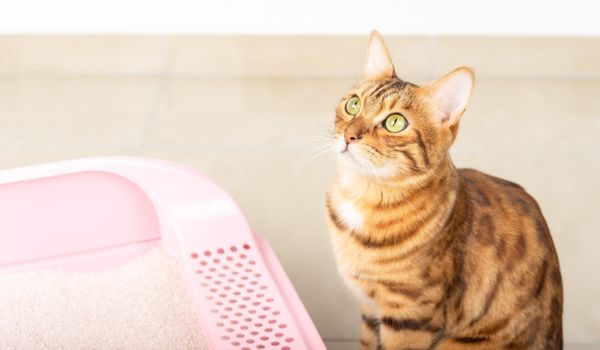
b. Rule Out Medical Concerns
This should be your primary concern. Observe your cat, notice abnormalities, and pay a visit to your vet armed with the information to get a thorough examination. A specialist would be able to identify any underlying medical issues and advise you, among other things, on addressing the cat litter box issues.
c. Manage the Stress Stimuli
Accidental leakage or relieving where it should not are not the only signs of stress. You will find that your cat is behaving like itself and shows fear, among other symptoms.
As responsible pet parents, be wary of their feelings and try to manage them before a stimulus can distress them. Here are some of the suggestions to manage stress:
- Prepare a cat sanctuary where the cat is removed from the stress. Provide ample food, water, soft bedding, cat toys, and a litter box positioned considerably away from the food. Let the cat stay in it while possibly stressful activities.
- If there is a new addition to the family, a baby, a person, or another pet, it would be better to socialize the cat slowly. You may assign the pet a certain area of the home where the stimulus would not be walking in on it and then proceed with the socializing until it starts to be tolerant.
- In case you have moved out of your previous home or made considerable changes to the interior, resort again to creating a sanctuary for the cat. Give it a homely feel the cat might associate with, such as its old stuff, a plant, and old toys. And slowly allow it to get familiar with the rest of the house.
- Try using pheromone diffusers to make the environment calming enough for the cat to go.
- Getting in touch with a pet behaviorist would be an excellent idea to help you through a stressful phase. If left untreated, it poses serious risks to the animal’s welfare.
d. Make Previously Used Spot Unapproachable
Once the cat has used a spot or piece of furniture to do its business, it is more likely to go back to it over and over. Simply cleaning the space is not enough; you wish to remove any visual or odor signs.
- Treat the floor, bedding, or furniture with an odor-neutralizing cleaner to eliminate the stench.
- Change the appearance of the spot by adding some color or changing the arrangement.
- Try putting its food on the spot. Cats would not eat and defecate at the place, so that would help. But only after you get rid of the smell, or you may risk the cat going hungry.
e. Get it spayed/neutered
Unneutered or un-spayed cats are more likely to engage in spraying around the house. If the cat has recently started showing the behavior, getting it on the operation table could solve the problem.
Whether or not the cat has undergone spaying or neutering, once it gets used to defecating/urinating outside the litter box, breaking the habit is next to impossible.
f. Try Restriction
If all else fails, restrict the cat to one room and train until it picks up the habit. Since you are trying to get it to use the litter box, avoid putting there any item that might seem more tempting to use, such as a rug. If there is a plant inside, cover its soil with a material not favored by the cat to prevent it from using that.
If the problem persists, try leaving some litter in various places around the room so that the cat starts associating the litter with relieving itself and eventually goes to the litter box.
Final Word: How to Go About Cat Potty Training?
Cats need only to be reoriented in the right direction for effective training. Begin the process early on. Introduce them to the litter boxes and put them inside to start using them instinctively. Facilitate by bringing them over to the box when they are most likely to go. Reward successful use and ensure cleanliness.


